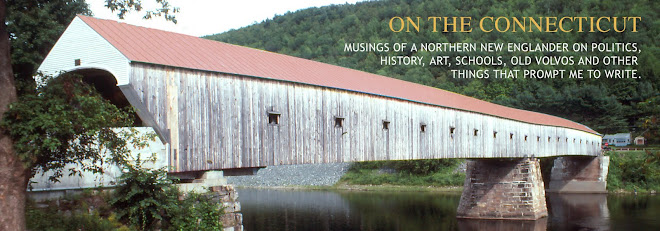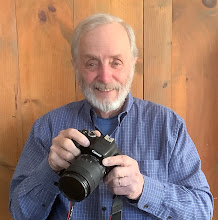I own a 1967 Volvo 210 Duett. I’ve had it for thirty-eight years. Maybe it now owns me.
If you don’t know what a Volvo Duett looks like, picture a small 1940s panel truck with windows. The name Duett came from Volvo’s intent that it was a dual-purpose car. It could be used for daily transportation and for weekend excursions.

I don’t have a recent photo of my car, because it’s stored in a friend’s barn; but I did find one like it in the Volvo museum.

My love affair with these cars began in 1959 when I was fifteen. My mother bought a shiny new red-and-gray 445 Duett. It was the car I drove when I first got my driver’s license -- a funny-looking little Swedish car with a twin-carbureted sports-car engine and a blatting exhaust.

The car combined funky good looks, practical utility and excellent performance. It had better acceleration and fuel economy than many contemporary American models. It was also the car I was driving when some guy from the next town ran a stop sign and hit me nearly head on.

There were seven of us in the car. Thanks to its rugged construction, none of us were killed; but the car was destroyed. My mother wanted to buy another, but she couldn’t find one. Volvo only produced a few thousand a year, and they were never regularly imported to the U.S.
I found a Duett when I graduated from college -- a rusted, worn-out 1958 model that got me back and forth to my first post-college job. It consumed a quart of motor oil for each tank full of gas and had almost no brakes, a serious deficiency for commuting in and out of Boston every day—particularly when Route 2 west of Boston was under reconstruction. Slow moving construction vehicles often brought rush hour traffic to a sudden halt. On several occasions, I had to execute some heart-stopping evasive maneuvers.
While driving in the car with my wife one weekend, I spotted another one in good condition and flagged down the owner. We swapped stories; and I asked him to let me know if he was ever interested in selling. I got a call a few weeks later and bought the car for $600.
I parked the old one in the woods behind my mother’s house to save for parts. It eventually went to the junkyard.

I now had a reliable, shiny dark blue and gray 1958 445 Duett. It looked great and attracted a lot of interest. Everywhere I went in the car, people commented on it. And the very few times I met another one was an occasion to stop and talk.

I drove the car for three years. I loaned it to my boss one day, and he smashed it into a phone pole. I was devastated. It was repairable but would never be the same again. I sold it to a friend who patched it together and drove it several more years before parking it in a field behind his Vermont farmhouse. It was still there last I knew.

On my way home from work three years later, I passed a shiny dark blue 210 Duett. I turned around, followed the driver home and pulled into his driveway behind him. When I asked if he was interested in selling the car, he admitted that his wife was after him to get a more conventional car. A few days and $1100 later, it was mine.
The car was in good physical condition, but had already traveled more than 150,000 stop-and-go miles as a newspaper delivery vehicle. I installed a highly modified engine, beefed-up suspension, oversized tires on wide orange wheels, Italian driving lamps, garishly flowered window curtains and an eight-track stereo system (Remember, this was 1971).

It was great sport to out-accelerate the hot imports of the day at stoplight encounters. My hopped-up Duett left many a surprised BMW 2002 and Datsun 240 in the dust.
The car was my pride and joy. It was fun, fast and attracted lots of attention. I never let anyone else drive it for fear of having this one wrecked too.
I drove that car for six years, logging more than 150,000 additional miles. With our three young children, my wife and I traveled, camped and enjoyed many memorable family adventures in that car. It was part of the family. When it finally began to show its age at more than 300,000 miles, I bought another car and stored the Duett in my garage to be restored.
Years later, I was visiting with my good friends, Malcolm and Kathy Lee, when the subject of my 210 Duett came up. I described the car to Kathy, since I didn’t know her when I was driving the car.
Her face lit up. “I know that car. My sister and I drove it for several days.”
“You must be thinking of a different car," I told her. "I never let anyone drive that car.”
“I did. It had bright orange wheels, wild flowered curtains in the back windows and a little plastic Cookie Monster glued to the dash. A body shop in Acton loaned it to me while they painted my car.”
The Cookie Monster clinched it. I had my car repainted at the same body shop. They loaned it out without ever telling me.
Thirty years later, it still isn’t complete. But I haven’t given up.
The Duett has gained a cult following for its individuality, utility and rarity. And it was one of the Volvos that helped the company earn its reputation for durability.
Every so often, I do a Google images search for Volvo Duett and save photos I find. Here are a few of my favorites:











If Volvo were ever to produce a retro Duett, I have some ideas about what it might look like.

A disclaimer: I lost most of the photos that I took of my Volvos over the years. With the exception of the 445 in the Vermont field and the two black and white photos, I used photos of similar cars that I found online to illustrate this entry. I hope the owners of these photos don’t object to my including them here.

























